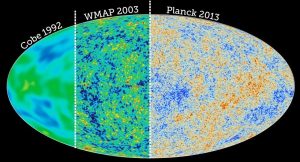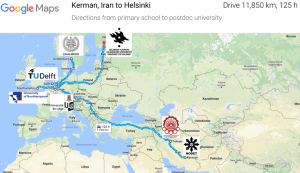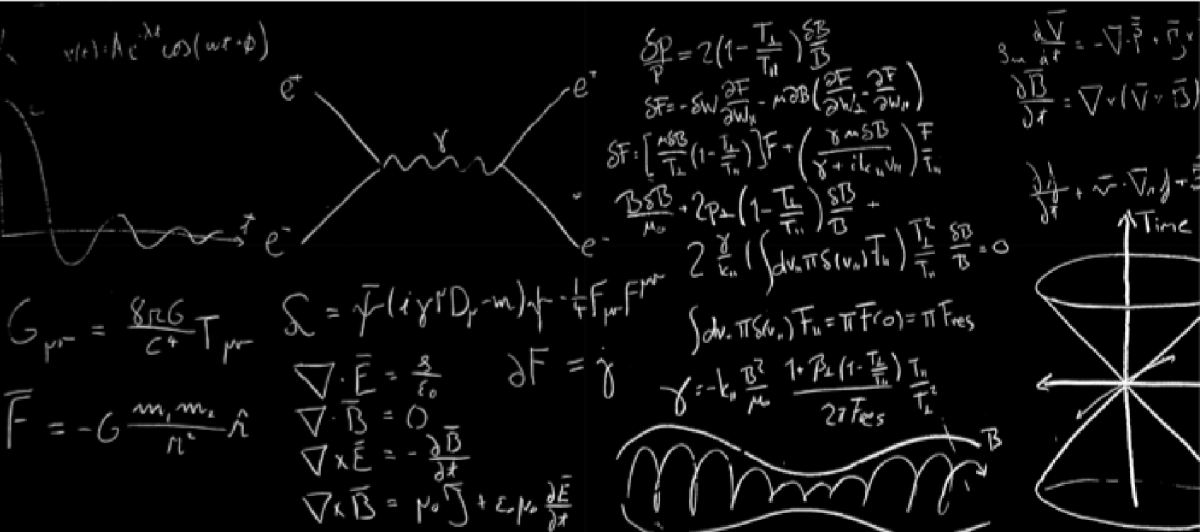Text: Erika Palmerio
The history of humanity through the centuries and millennia has often been characterised by one central question: how did everything come to being? We have, for example, many documents from ancient Greece written by philosophers that spent their life looking for the ἀρχή (arche), that translates to “beginning”, “origin”, “source”. Science and technology have answered many questions since then, and thanks to them we have formulated many theories, but a number of questions still remain unanswered. For example, what happened during the early evolution of the Universe, that is, a few seconds after the Big Bang? We do not have direct access to this information, but we do have some observational signatures of what might have happened. Early Universe Cosmology is a field that aims at finding theories for the early stages of the Universe through studying these signatures. These theories, then, would have to agree with what we see today. The Higgs boson, for example, was a significant particle back then (it is a heavy and unstable particle that has decayed already) that had an important impact on the Early Universe. The Standard Model of Particle Physics aims at describing the Universe as we see it today, but we know that it is an incomplete model, since it cannot explain several phenomena that we do observe (dark matter, the accelerated expansion of the Universe, baryon asymmetry, etc.).

Venus Keus is a postdoctoral researcher in Particle Physics at the University of Helsinki. As a child, she was always very curious about the world around her. “I wasn’t satisfied with knowing how a bicycle worked. I wanted to know WHY it worked the way it did!”, says Venus. She had many different interests, but science fascinated her the most. She realised in high school that physics was what she wanted to pursue as it dealt with the reason behind different phenomena. “I wanted to know everything about everything, which sounds quite silly now – jokes Venus – and physics was the field that was going to give me answers about how and why things worked”. However, she realised the chances of doing research in physics in her home country, Iran, were quite slim as the country doesn’t invest in research in fundamental physics. So, after receiving her Bachelor’s degree in Physics from the Amirkabir University of Technology in Tehran, Iran, she decided to move abroad.

She got a scholarship to study Bionanotechnology at the Delft University of Technology in the Netherlands. As exciting as it was to work at the interface of biology and physics, it was not what fed Venus’ curiosity. She wanted to go deeper to understand why these little particles and molecules behave the way they did. After getting her first Master’s degree from TU Delft, she moved to Sweden, this time for another Master’s program in Nanoscience at the Chalmers University of Technology in Gothenburg. “I enjoyed this programme more, where I worked on transportation properties of graphene and nano-ribbons”, says Venus. Finally, after getting her second Master’s degree, she knew what she wanted to do for life: particle physics.
Venus got a PhD position in Particle Physics at the University of Liège in Wallonia, Belgium. The position was for six years, but she ended up finishing her doctoral studies in three years. “It was an intense period, especially because I had jumped into a completely new mathematically challenging filed. There were times when all I could see were equations with no clear connection to the real world!”, Venus explains. Towards the end of her PhD, she moved to the UK as a visiting fellow at the University of Southampton. The research environment she found there was great and she believes it was during that time she started to understand the physics of particles at a deeper level. When asked when she started to “see the world behind the equations”, she says: “It is not something that happens overnight. It is a continuous process that happens little by little. Having a PhD in physics gives you the confidence to believe that you understand what is going on and that you can make a contribution. Going to conferences, seminars, and workshops is very helpful because you hear about new models or even similar theories but from different perspectives, which helps you put a general picture together.”. Moreover, Venus believes that one should never think “I’m too old to learn something new”. She still goes to lectures and basic level seminars on the chance of learning new subjects and new perspectives.

Finally, Venus came to the University of Helsinki for her first official post-doc. Finland was not actually a planned destination. As Venus explains, particle physics is a very competitive field with not many job openings and one cannot be very picky with where to go. She confesses that she knew very little about Finland before accepting the job offer in 2014, but she was very pleasantly surprised and welcomed into the research community in Helsinki. “I cannot deny that it was a bit of a shock to come here for the first time in April – jokes Venus – and see the frozen sea from the plane!”. However, adapting to life in Helsinki was no struggle and even though she came to Finland not knowing what to expect, Helsinki is her most favourite place to both live and work.
Venus works on Particle Physics and Early Universe Cosmology, trying to come up with theories to explain the evolution of the Universe, to match with observational data and to find unique experimental signatures so these models could be confirmed or ruled out one day. “I feel very lucky to be doing what I love for a living. It doesn’t pay much or leave me much free time but I really enjoy it”.
